New England aster (
Symphyotrichum novae-angliae) is one of the showiest North American native plants in the fall garden. Vibrant purple petals and contrasting yellow to orange centers are visually attractive to both gardeners and pollinators.
With pollinators needing a continuous supply of pollen and nectar throughout the growing season, New England aster fills an important niche in late September and October, as few other plants flower this late in the season. Use it in informal prairie plantings, butterfly or pollinator gardens, rain gardens or traditional perennial borders, or at pond edges, where fall color is needed.
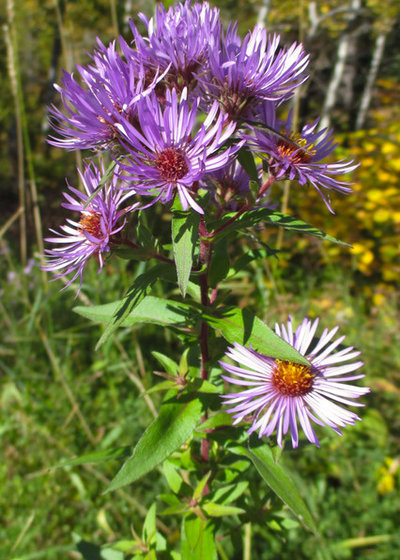
Holm Design & Consulting LLC
Botanical name: Symphyotrichum novae-angliae (formerly
Aster novae-angliae)
Common name: New England aster
Origin: Native to all of North America except Alaska, Idaho, Nevada, Arizona, Texas, Louisiana and Florida in the U.S.; in Canada it does not occur in Newfoundland, Prince Edward Island, Alberta, Saskatchewan or the Canadian territories
Where it will grow: Hardy to -45 degrees Fahrenheit (USDA zones 2b to 8b; find your zone)
Typical plant communities: Prairies, meadows, savannas, riparian and wetland edges, and woodland openings
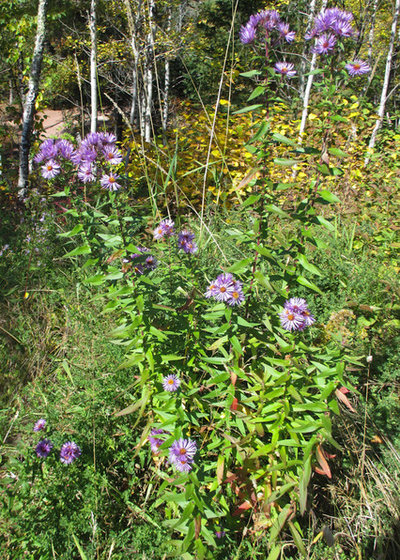
Holm Design & Consulting LLC
Soil requirement: Mesic to moist, sandy-loam to clay-loam soil
Light requirement: Full to partial sun
Mature size: 2 to 5 feet tall and 2 to 3 feet wide
Benefits and tolerances: Tolerates most soil types except dry, well-drained sites
Seasonal interest: Light pink to deep purple flowers from August to October
When to plant: Spring or late fall
Distinguishing traits. New England aster grows quietly in the background throughout the summer, then begins to shine as other perennials look worn out and tattered from the growing season; with tightly clustered, clasping leaves, upright flower stalks and clusters of purple flowers, this native perennial is a star of the fall garden.
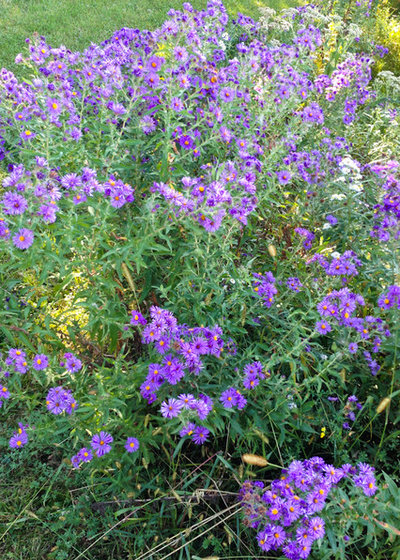
Holm Design & Consulting LLC
How to use it. New England aster performs best in moist sites, including rain gardens, ditches, pond or wetland edges, or other low-lying sites where water collects after a rain fall. Drier sites are tolerated if the soil has a higher clay content. This plant’s preference for moist sites is more apparent in the upper Midwest. As one travels eastward around the southern Great Lakes area, New England aster commonly grows alongside Canada goldenrod (
Solidago canadensis) in old, dry fields.
New England aster does well in traditional perennial borders when sited near the back of the bed to accommodate its tall stature.
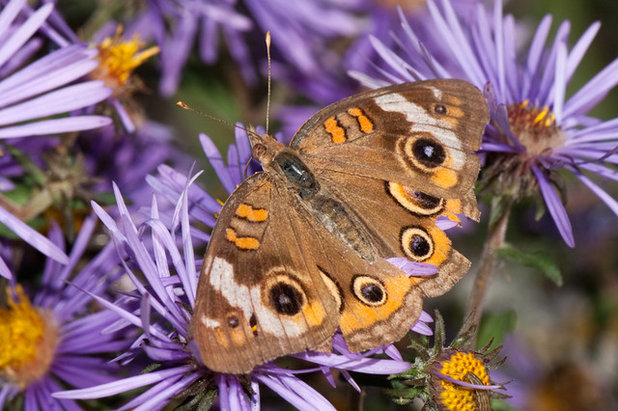
Holm Design & Consulting LLC
Planting notes. In droughty situations, the lower foliage can brown out in midsummer. Gardeners often plant a perennial in front of the aster to hide this potentially unsightly feature. If this is a recurring problem, consider transplanting your plants to a moister site. Gardeners who do not like the plant’s height can cut back the flower stalks in midsummer (July) to keep the plant more compact.
In rich, loam or clay-loam soils, New England aster has the potential to reseed prolifically. If this is a concern, you can cut off and bag the flower heads to reduce seed dispersal. Normally it is nice to leave seeds for wildlife to consume, but the seeds on this aster are rarely sought after by birds or other wildlife.
Shown: Common buckeye butterfly (
Junonia coenia) on New England aster
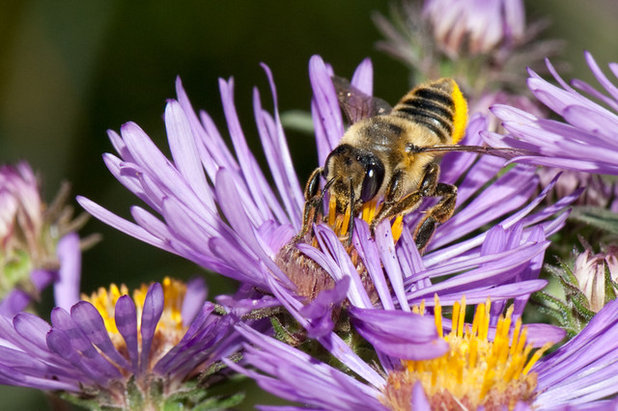
Holm Design & Consulting LLC
Pollinator notes. New England aster is a staple for pollinators in fall, when few other plants provide nectar and pollen. Migrating butterflies, such as monarchs, depend on this valuable nectar source as they prepare for their southward journey in the fall. The open, flat flowers provide an easy platform for perching on while gathering nectar — a floral feature preferred by butterflies. The shallow disk florets in the center of the flower allow pollinators access to nectar whether they have a short or long tongue.
How to design a garden for monarch butterflies
Shown: Female leafcutter bee (
Megachile sp) on New England aster
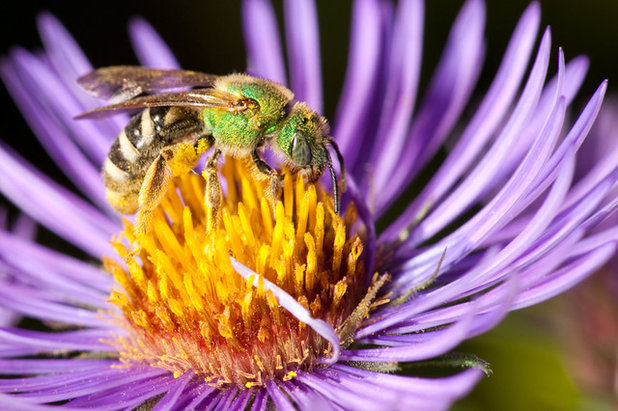
Holm Design & Consulting LLC
Look for many types of wild bees, honeybees, flies, beetles, butterflies and day-flying moths visiting the flowers.
Shown: Female green sweat bee (
Agapostemon sp) on New England aster





